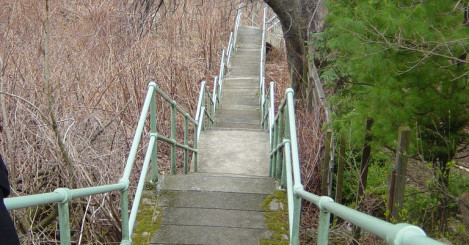
 )
)Last week we talked about computers learning how to play Go. The problem can be simply stated: given the current arrangement of pieces on the board, find the best next move. I compared this to the problem of sin and asserted that God’s solution, the incarnation and suffering of Jesus, was the best possible solution. In doing so, I elided over an important aspect: by what criteria is it ‘best?’
For Go, what’s best is the move giving the best chance of a victory. But not all questions of what’s best are as straightforward. Consider the problem of routing from “here” to “there.” Do you want the shortest route? The fastest? The most scenic? The least stressful? The one that’s easiest to remember? Say you want the shortest route, and you ask your GPS to find it for you; you’re still not out of the woods. The route may look good on paper, but as my son has become fond of saying, the map is not the territory. Here in Pittsburgh, we have staircases that were built to help people commute up and down hills. They are considered streets, presumably so that transportation funds can be used to maintain them, but you can’t drive on them no matter how strenuously your GPS insists.
Since people have different priorities for choosing routes, and since the reality of the roads can differ from the symbolic maps, we don’t always choose the shortest way. This presents a challenge for traffic planners. There are many opportunities to improve traffic flow in a given city, from retiming traffic lights to adding lanes to the interstate. Assuming finite transportation dollars (historically a safe assumption), choices need to be made. Making the best choice requires predicting how people will drive after a given change has been made. Traditionally, those predictions have assumed people make optimal choices to take the shortest route, but that’s probably a dubious assumption.
The diversity of actual driving choices was confirmed by a recent study. The study compared actual driving routes with the optimal route provided by navigation software and found that sometimes we take the long way ’round. We might insist drivers get their act together, but a more pragmatic solution is to improve traffic models. Instead of assuming all drivers act the same way, we should account for actual human behavior. In other words, we need to add some grace to our traffic planning.
Going back to the problem of sin, it’s noteworthy that God’s solution involves grace. Presumably, he could have insisted on a solution that involved us not sinning. Such a solution might seem demonstrably better, since it would result in no sin. On the other hand, isn’t that the solution offered by the law? Perhaps I’m oversimplifying, but that’s how the law has generally been presented to me, as a solution that works just fine as long as no one sins. Not sinning looks great on papyrus, but empirically it doesn’t have a great track record. So at least part of what makes God’s solution of grace the best solution is that it actually works for actual people.
Andy has worn many hats in his life. He knows this is a dreadfully clichéd notion, but since it is also literally true he uses it anyway. Among his current metaphorical hats: husband of one wife, father of two teenagers, reader of science fiction and science fact, enthusiast of contemporary symphonic music, and chief science officer. Previous metaphorical hats include: comp bio postdoc, molecular biology grad student, InterVarsity chapter president (that one came with a literal hat), music store clerk, house painter, and mosquito trapper. Among his more unique literal hats: British bobby, captain’s hats (of varying levels of authenticity) of several specific vessels, a deerstalker from 221B Baker St, and a railroad engineer’s cap. His monthly Science in Review is drawn from his weekly Science Corner posts — Wednesdays, 8am (Eastern) on the Emerging Scholars Network Blog. His book Faith across the Multiverse is available from Hendrickson.

Leave a Reply